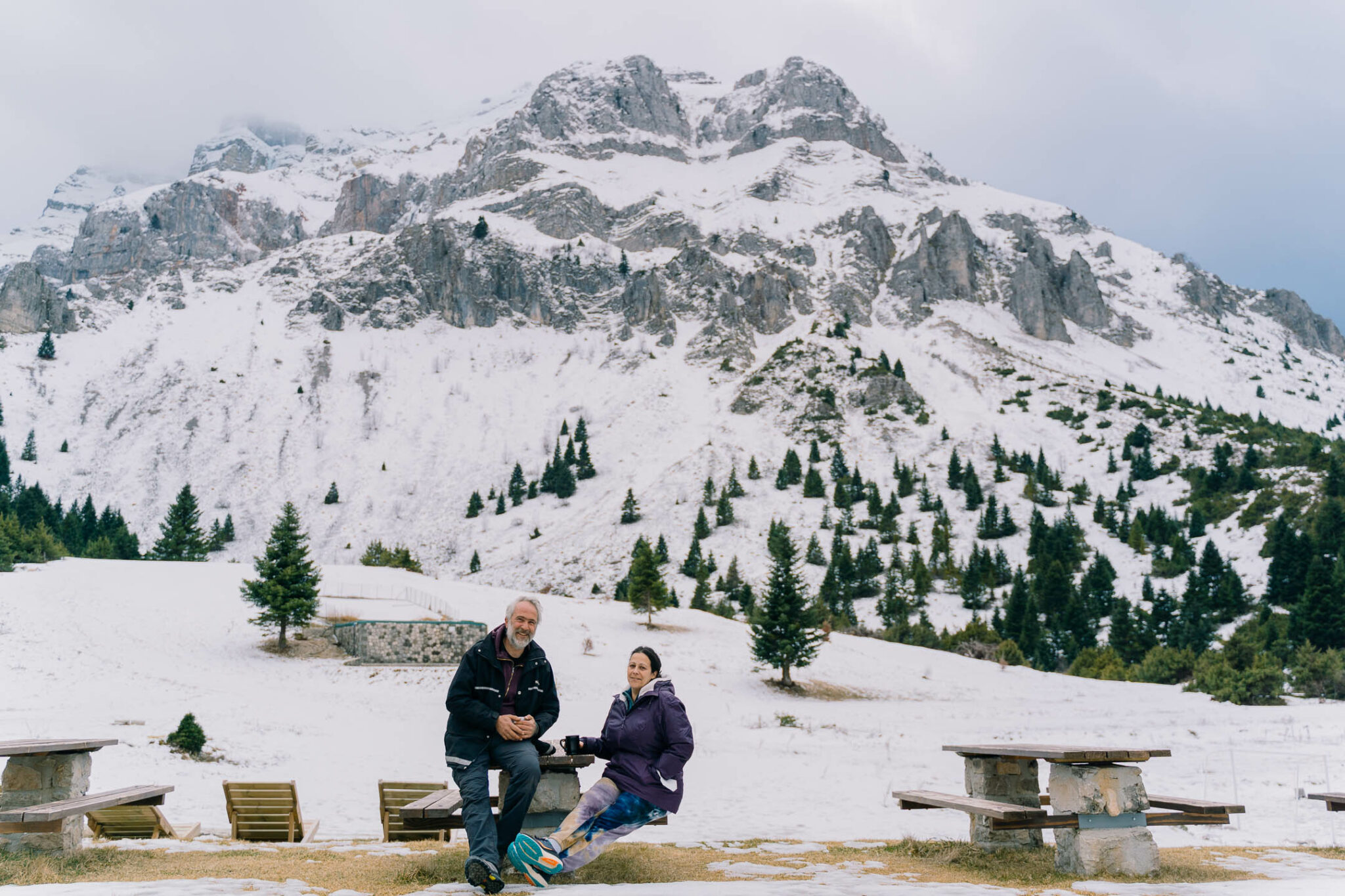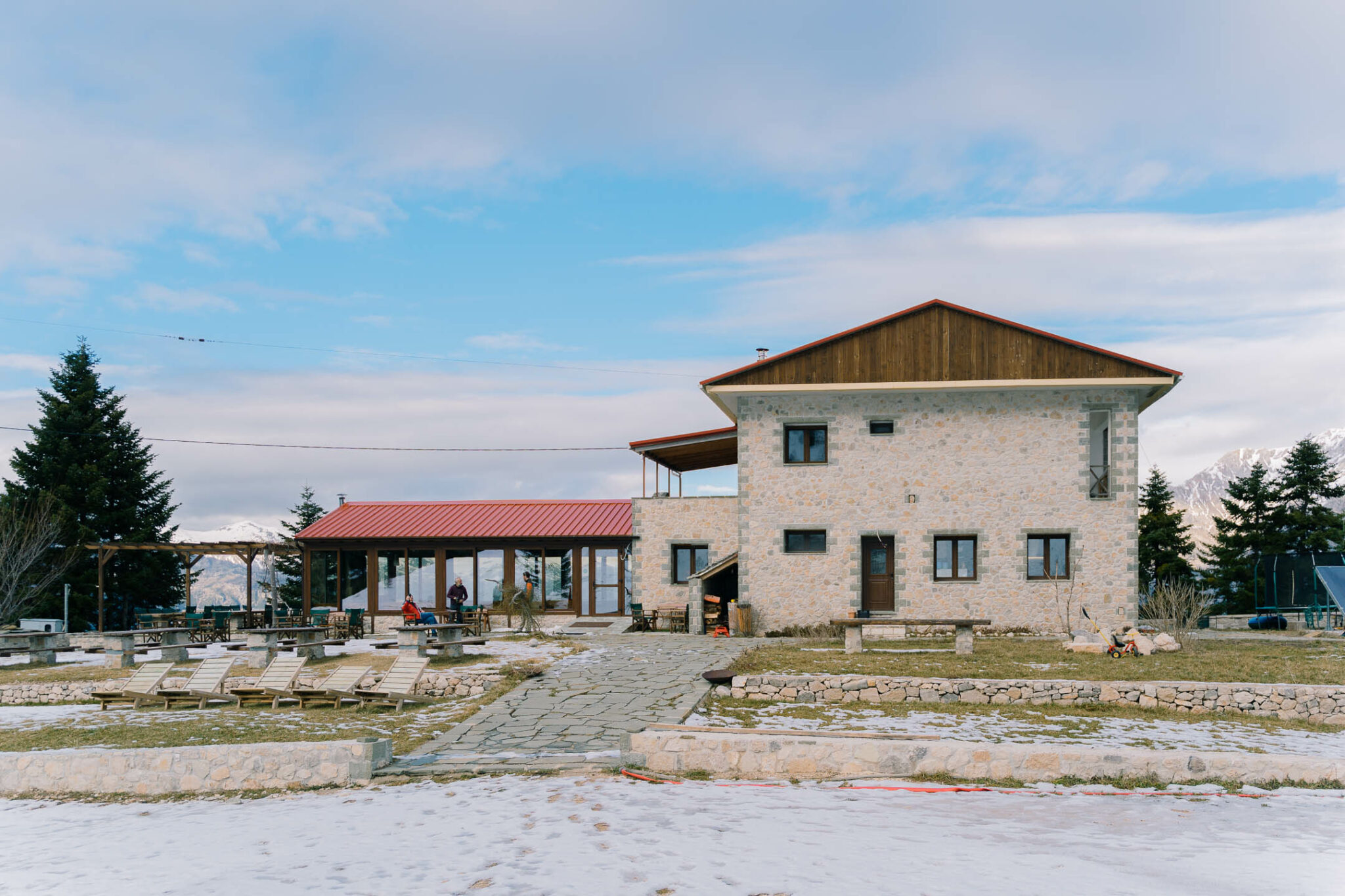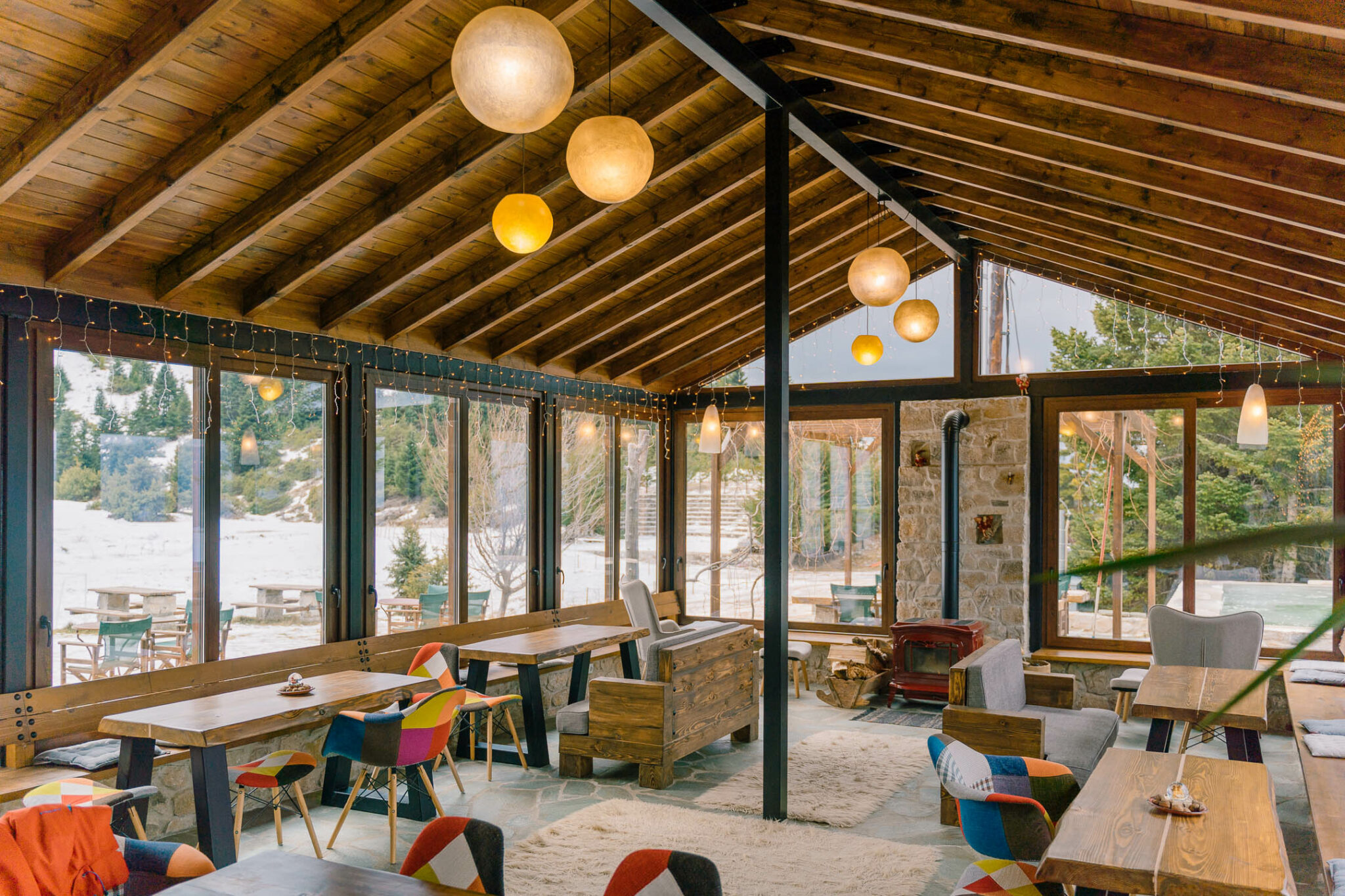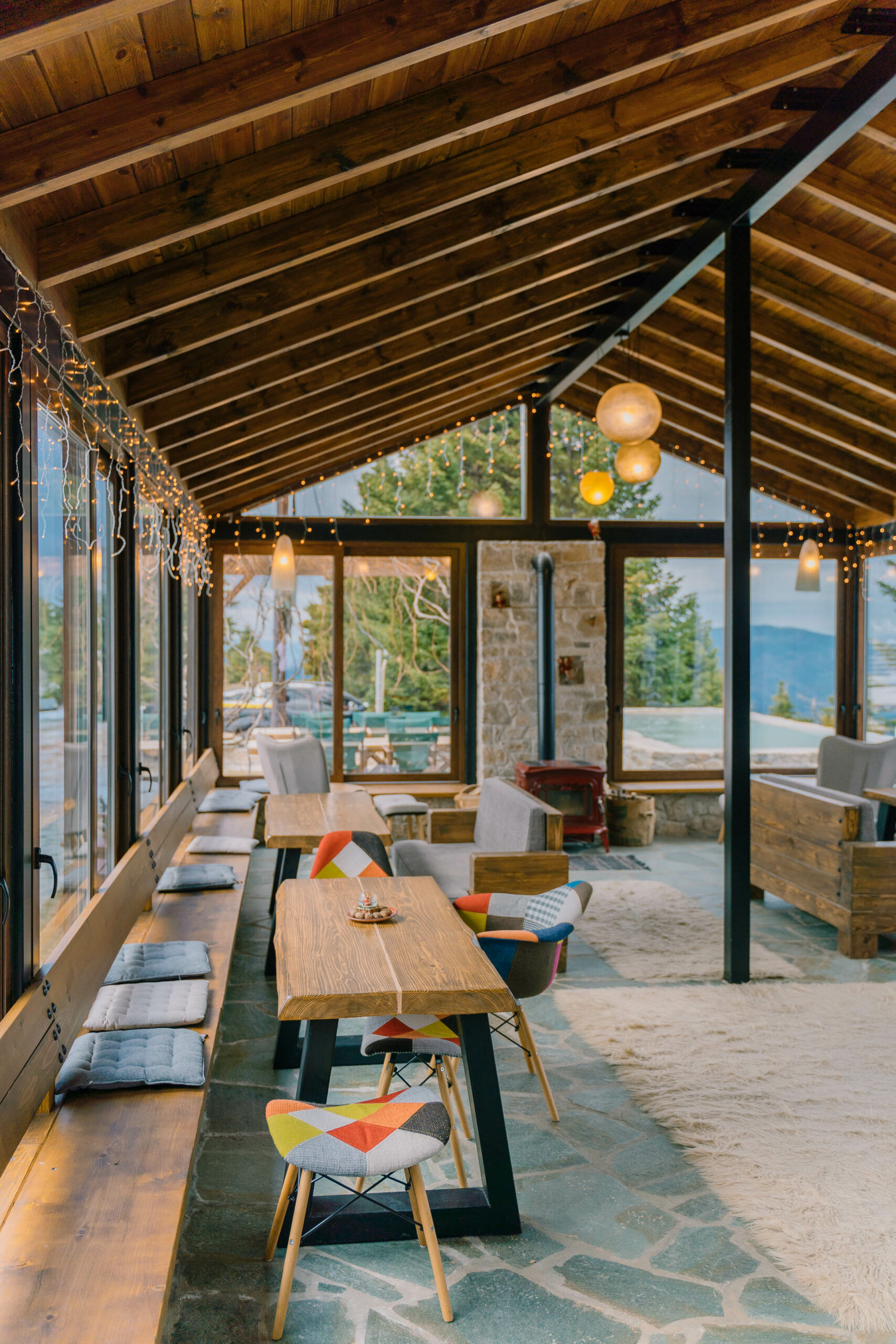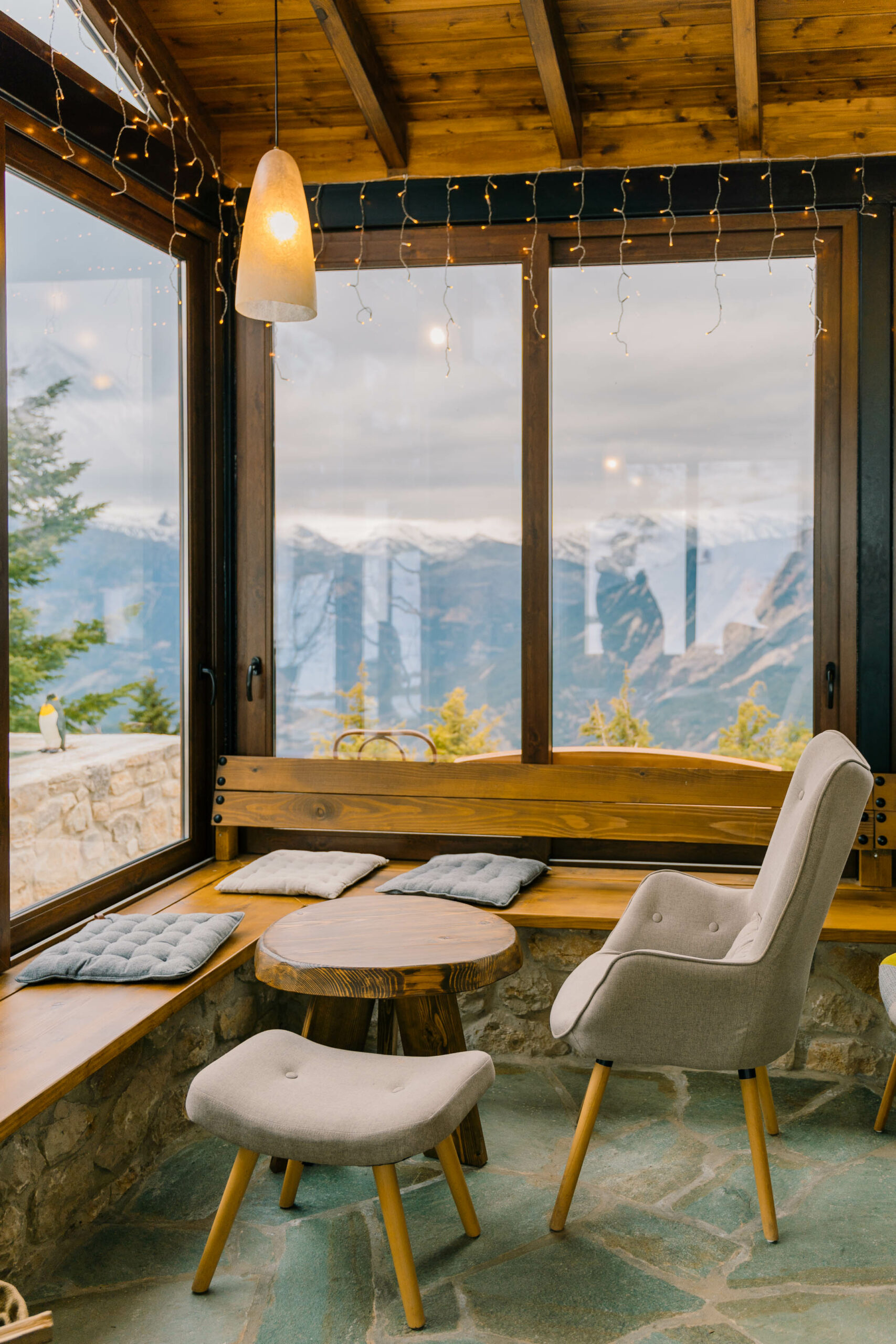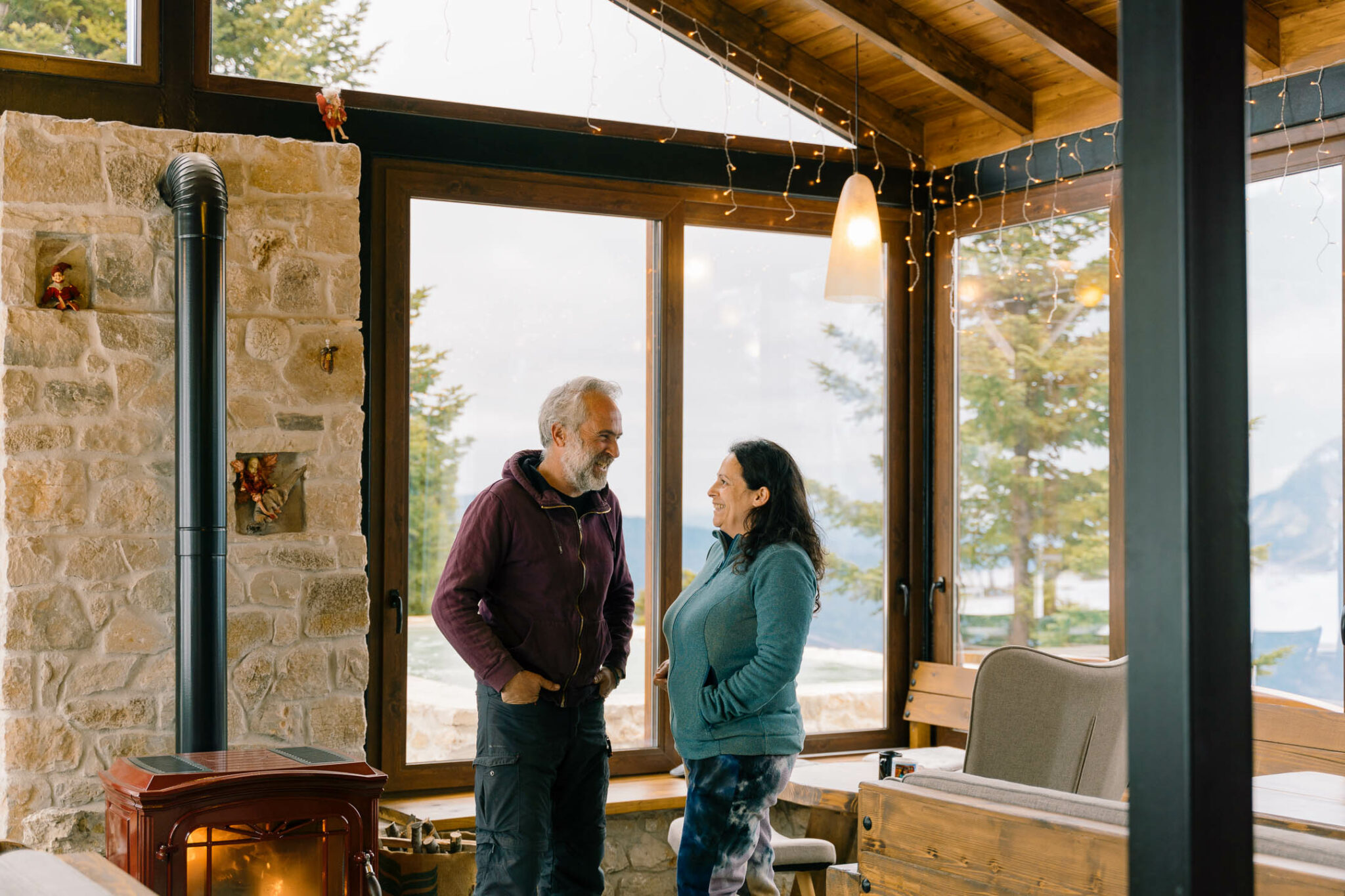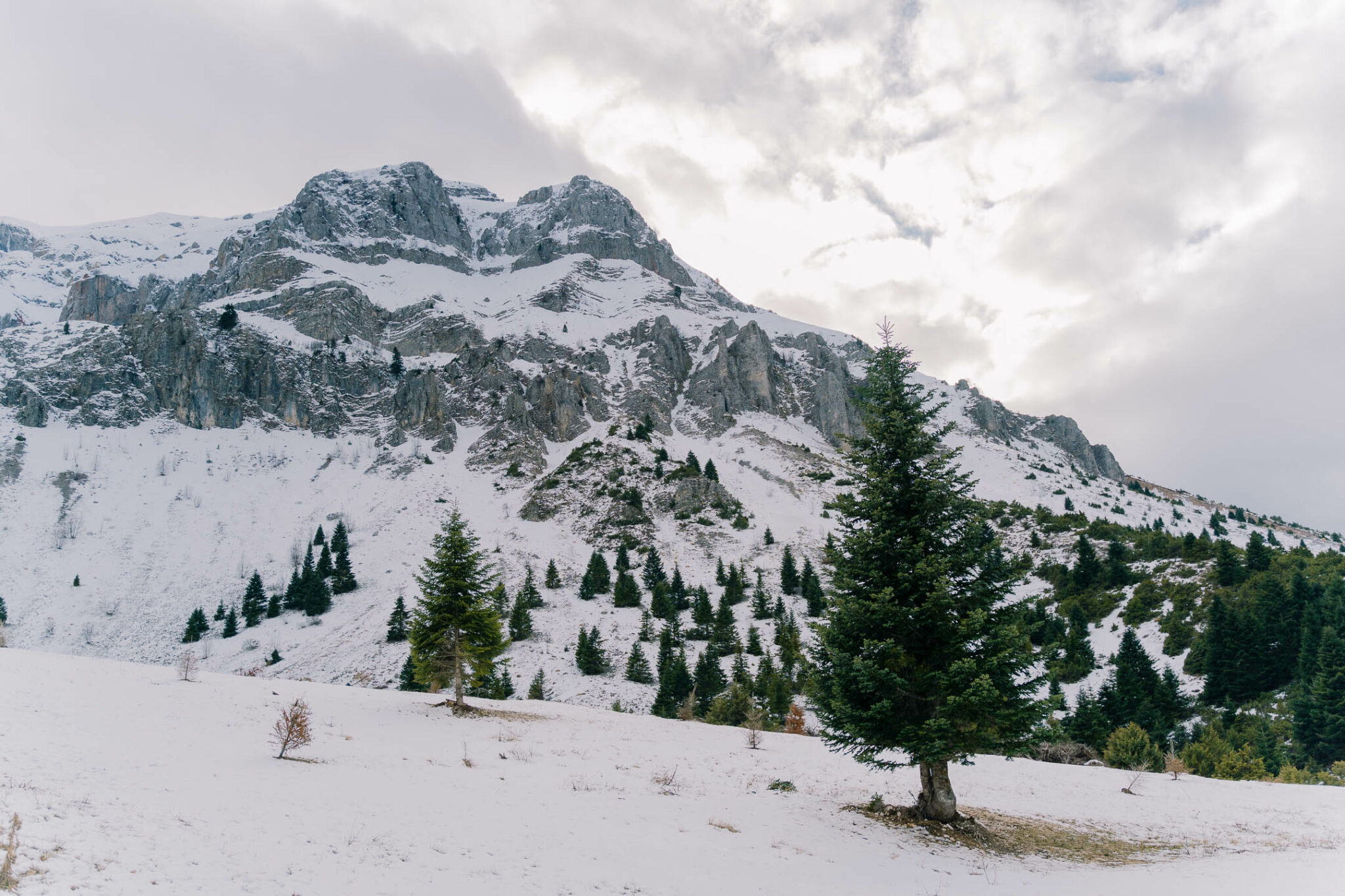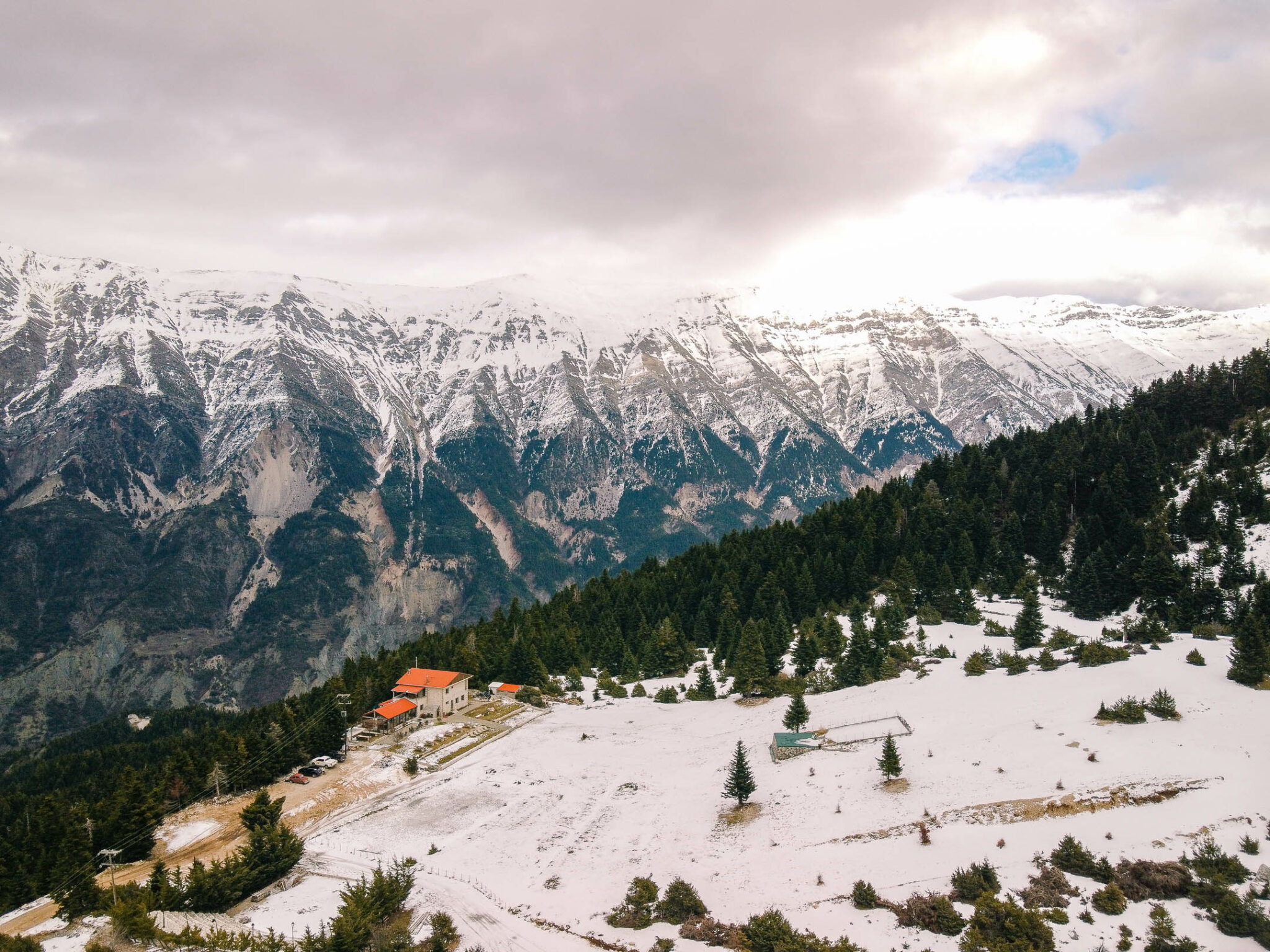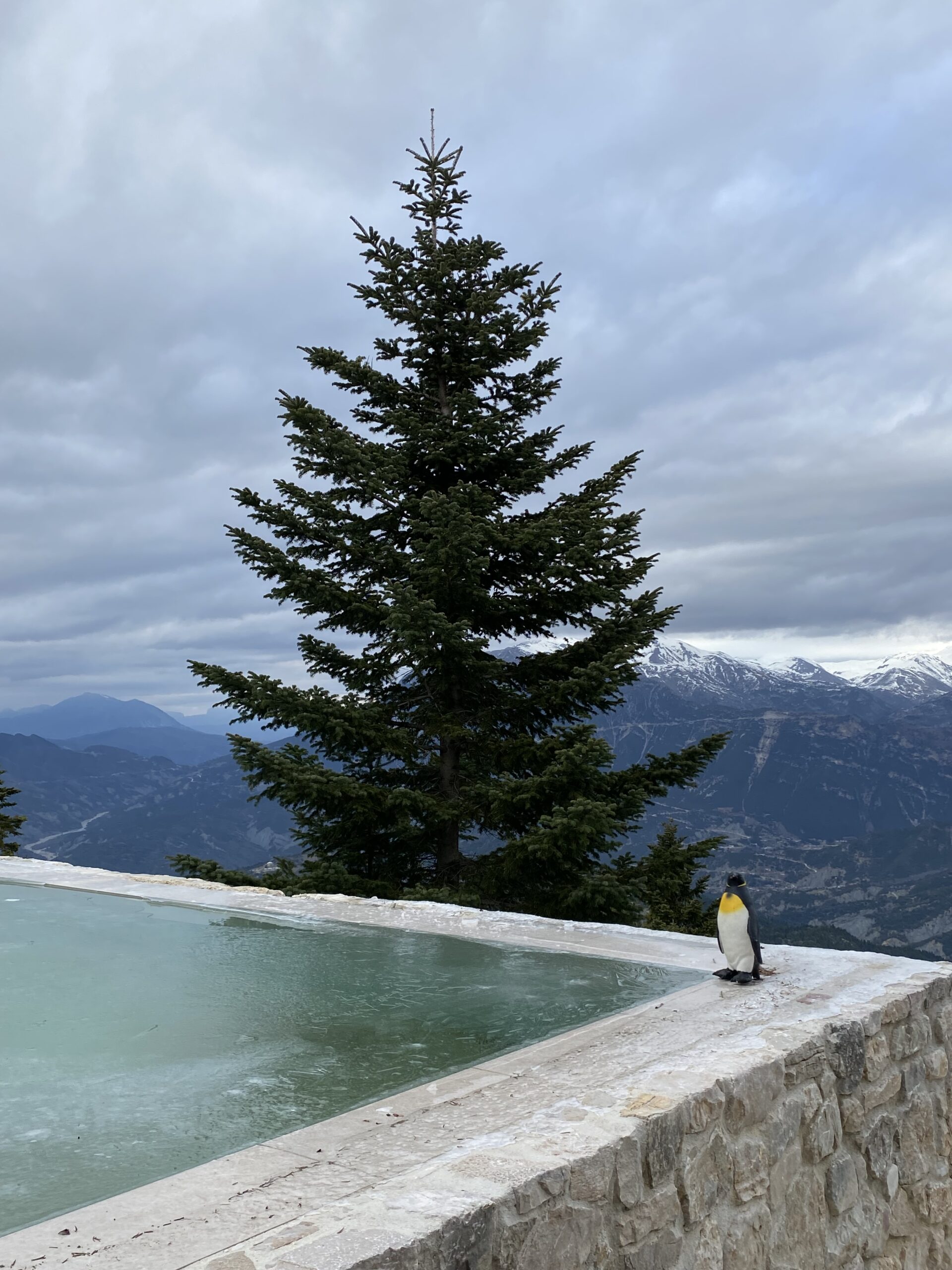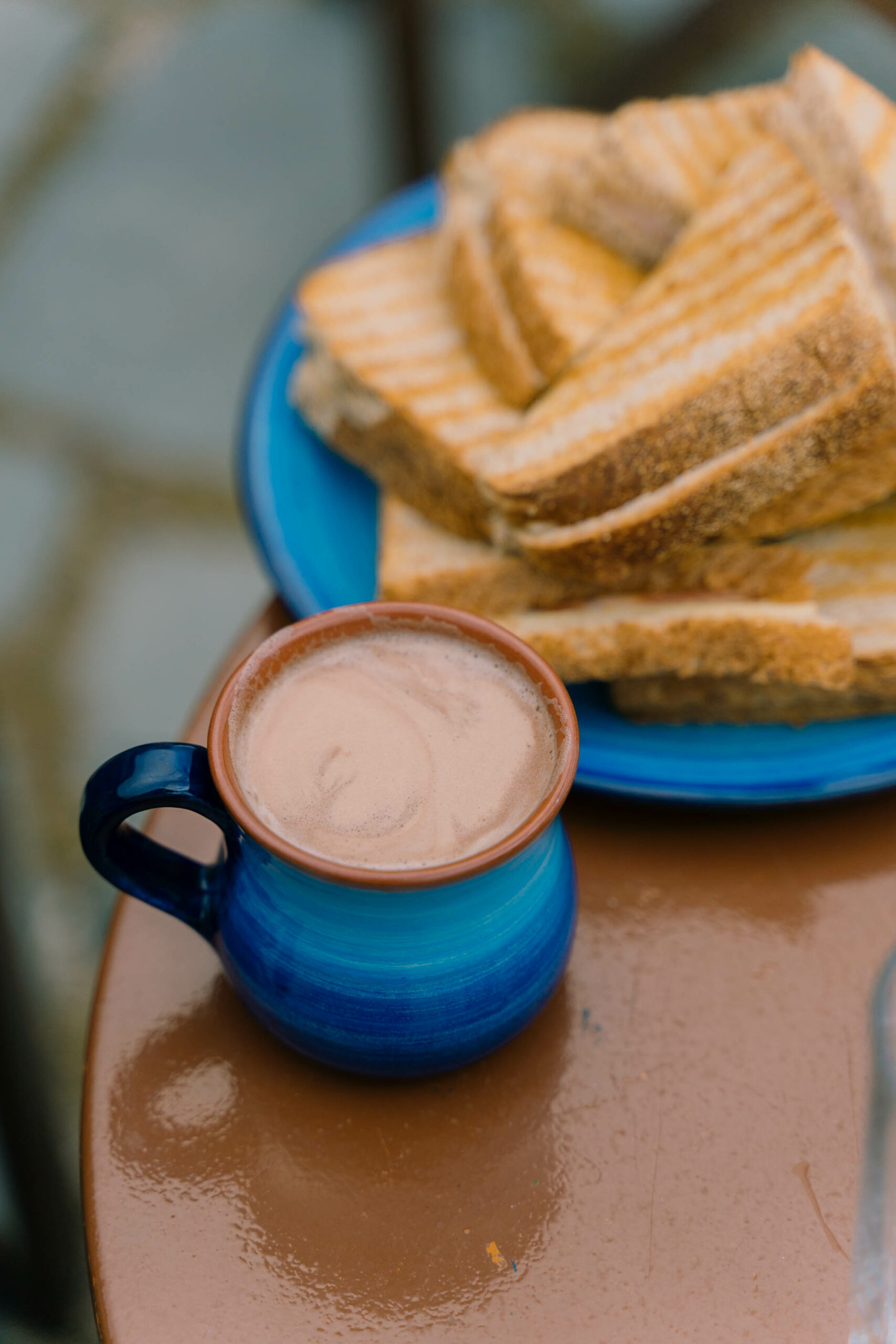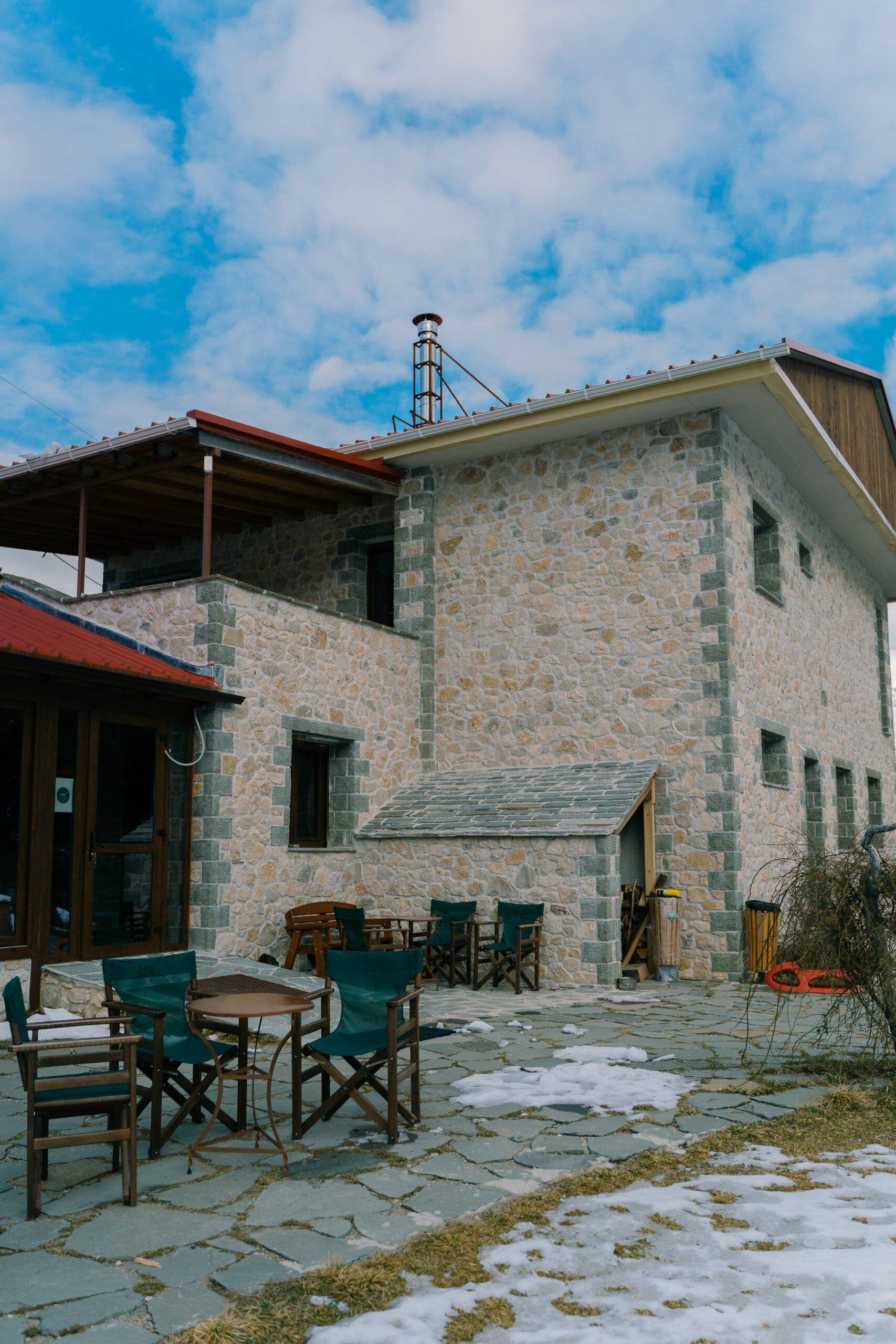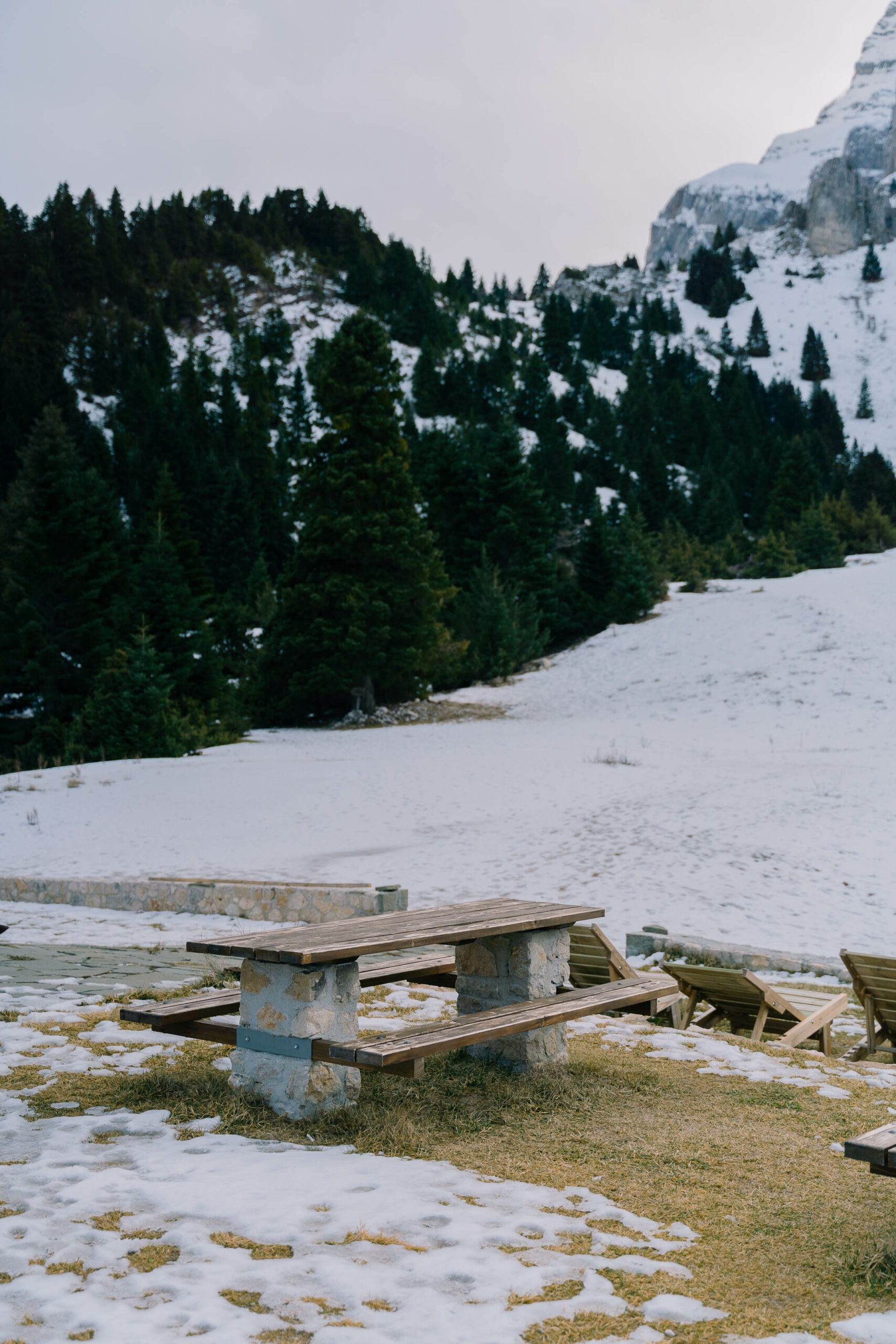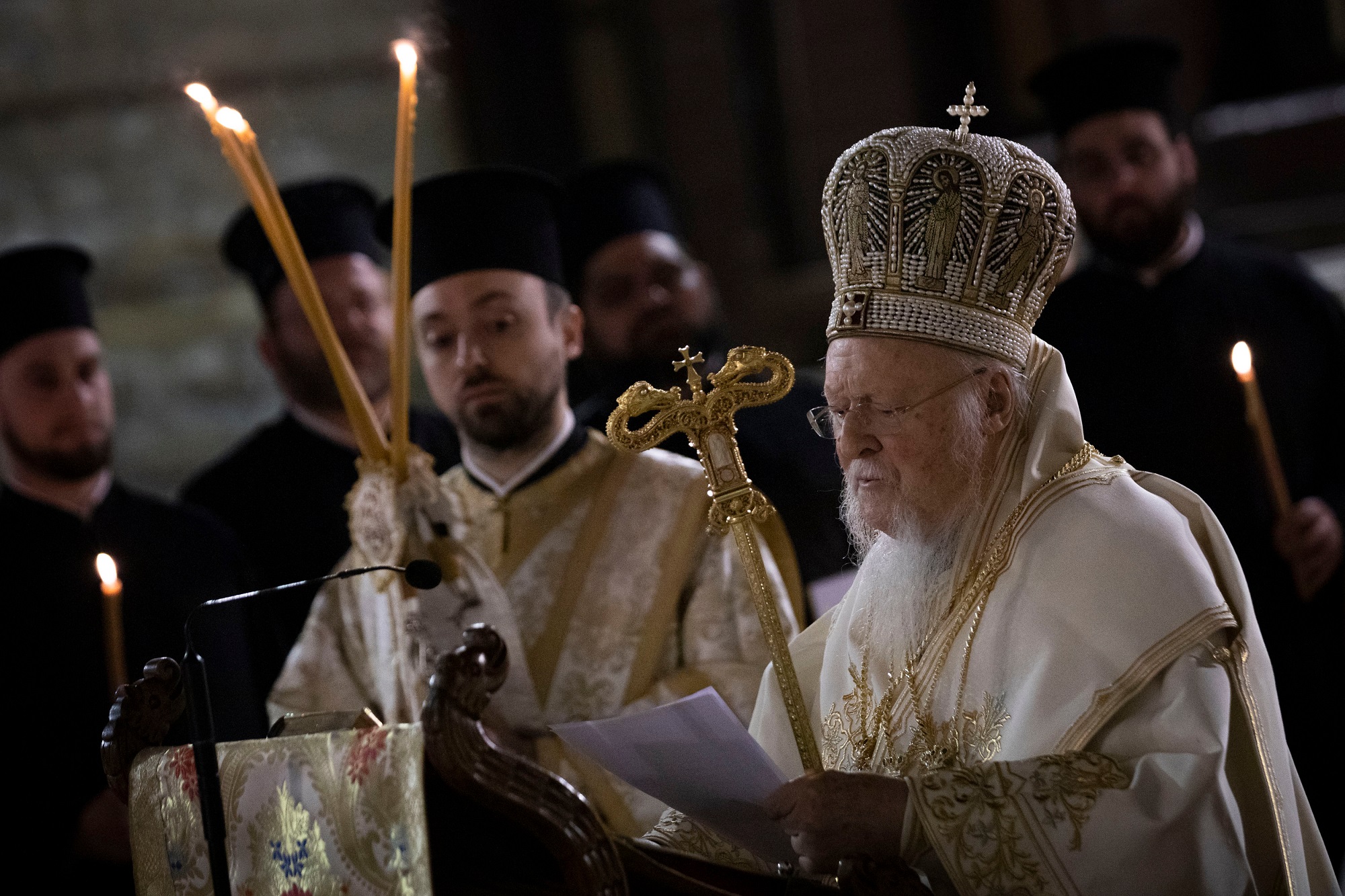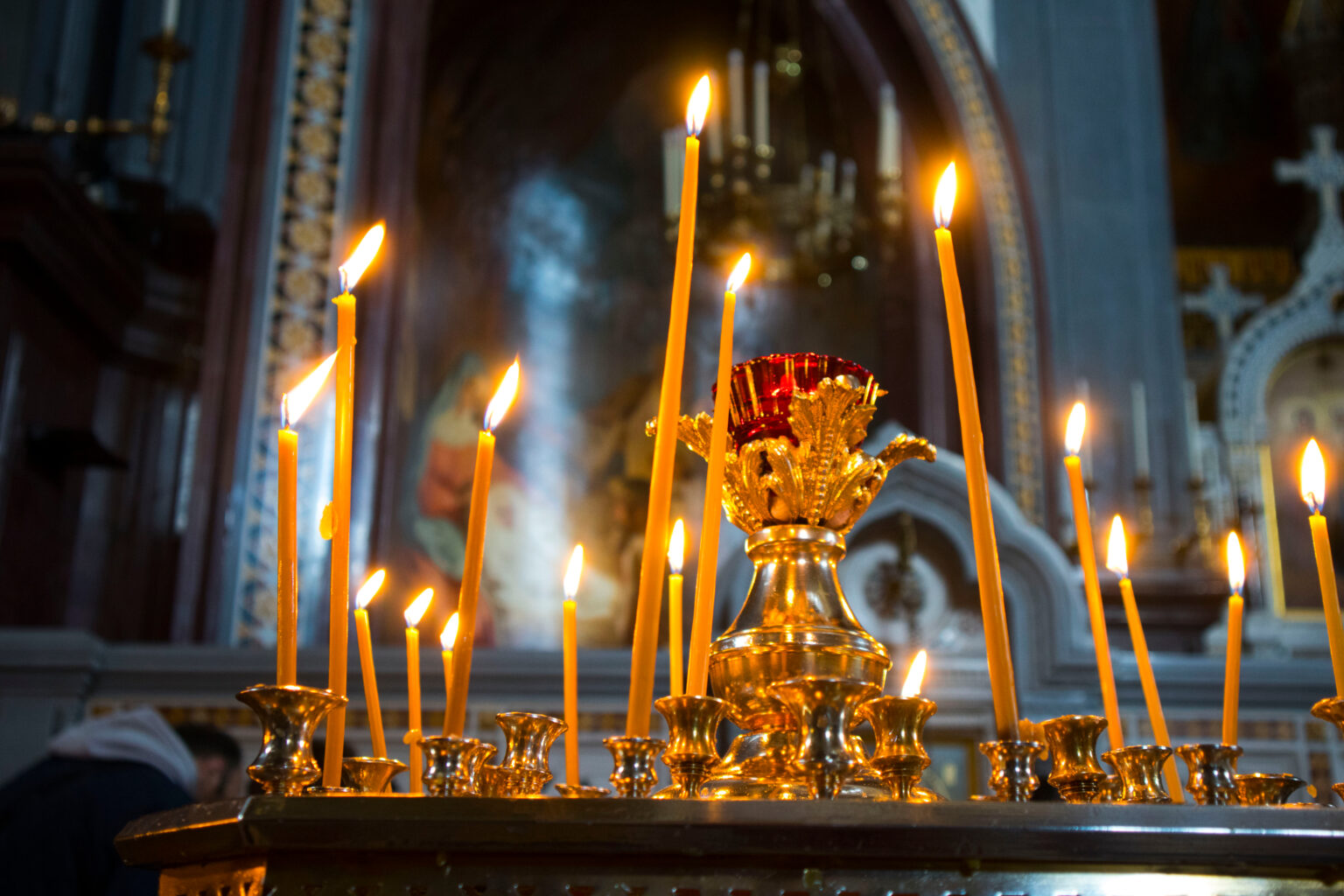Pola and Babis met and fell in love while they were still living in Athens. Pola grew up in Halandri and worked in antiquity conservation, and Babis grew up in Nea Smirni and worked in accounting. “We barely saw each other, as our jobs didn’t allow for much quality time. We quickly reached the conclusion that we had to change our daily life. We had to make a radical change that would give us the push we needed to move forward.”
In the shadow of Strogoula
When we were going up the Tzoumerka mountains, our guide and companion, Hristos Tasoulas, a man who loves nature and is well acquainted with each and every peak and slope in Epirus, suggested making a stop at the Pramanta refuge. As we headed up there, in the shadow of Strogoula, the highest and most imposing peak of Tzoumerka, the snow started making its appearance on the sides of the road. We were driving on a good, well-kept, dirt road and about 15 minutes away from Pramanta we reached the refuge that is at a 1,250 m altitude. There, everything was covered in white and it was quite cold. The slopping clearing in front of the refuge, at the edge of a thick fir forest, was filled with snow. We are so close to the Strogoula peak that it feels like we can reach our hand and touch it. No sound is heard. It’s a real delight. We’re here to meet Pola and Babis.
Reaching the refuge
As we approach the building, and despite the snow in the area being thick, everything is clear of snow, well-kept, ready to welcome visitors. Babis comes towards us. From the first moment you realise he’s a person with a sense of humour. And so is Pola. We’re introduced and they offer to make us a toasted sandwich. Great idea. Along with a hot chocolate it’s the best outcome, after all this way we’ve come.
We left Athens
Wooden tables and benches are lined, as if there’s a movie showing. Indeed, what we’re looking at does resemble a set. You can’t get enough. At first we sit outside and have a chat. “We were convinced we had to leave Athens, so we started researching where we could go. At first we went to Ioannina, where we stayed for almost 4 years. We had no links to the area then. Then we heard about this building, that was built in 1999 by the Region of Epirus and the municipality. It was in operation only for one year and since then remained closed. It had been turned into a stable,” Babis tells us, while Pola adds: “When we got here, fifteen years ago, and we first saw the location, we immediately said we wanted to live here. This gave us the patience, and strength, to do all the work that needed to be done. We rented the building from the municipality and we started doing work. For a while, in the beginning, about 4-5 months, we slept in sleeping bags and worked all day. We had a lot of help. And so, gradually, we made it work”.
The refuge-type guesthouse has three rooms and can accommodate up to 26 people. It’s always warm, it has warm water, while they also serve food, like soups and many more, and if you arrange it in advance they can prepare anything you ask.
The family’s two children
Guests here have many options. They can sit and enjoy the view and calm while drinking a hot beverage. They can also hike on one of the, varied in size, marked trails in the area. “I do my best to encourage guests to not just stay at the café. I talk to them about the surrounding forest, about its beauty and also about how easy it is to go on a little hike,” Babis tells us. We move to the interior. A bright red cast iron stove heats the space that is surrounded by glass. It’s still like we’re outside with the only difference being that it’s warm. The furniture is nice and comfortable, creating a nice vibe with the thick stone wall. Inside I meet Angelina and Orestis, the family’s two children. Angelina is in fourth grade and Orestis in sixth. They are building 3D puzzles, that are truly impressive. I try to figure out how, but quickly remember that I find regular 100-piece puzzles hard, and so I give up. Both children are very sociable, and they tell me they’re very happy they’re growing up here. “And when it snows, how do you get to school?” I ask. “The road is cleared, and dad takes us in the car,” they tell me. And Babis later confirms that all these years, there were very few days that they haven’t managed to leave, despite the sometimes-heavy snowfall.
Staying on the subject of daily life, I ask the children how they spend their day. “After school, we do our homework. In our free time we do various crafts, we go for walks in the woods, watch films. When there’s snow we go outside to play. Also, our friends come here often.” They’re very sociable and they also socialize with children who come with their families. “They have friends all around the world now. They text, send each other photos, and can’t wait to meet again”.
Going back outside we see what they call “recuperation bath”. Babis doesn’t want to call it a pool, and it really isn’t. “We made it because hikers and mountaineers, when they get here, need to rest their feet. Before we made this they would go to the river. We’ve now made it a bit easier. The water comes from a waterfall nearby.” On the day we were there it was frozen, and there was a penguin guarding it.
We leave the refuge with the feeling and certainty that life can turn out different. We are the ones who build the foundations and, to a great extent, shape the way things turn out in our daily life.
Read also:
Greek photographer left Athens at 33 to live in the Zagorochoria region
5+1 alternative children’s playgrounds in Athens
A “village” in the centre of Athens, just a few minutes away from Syntagma



